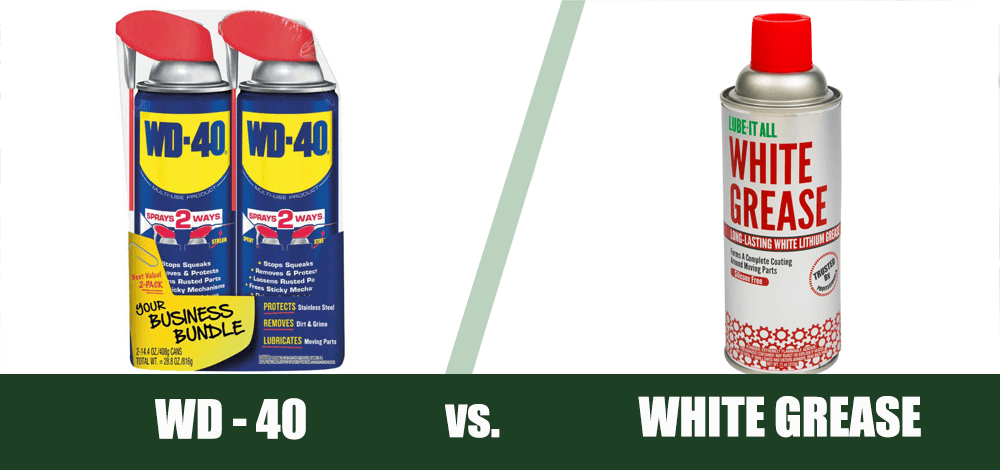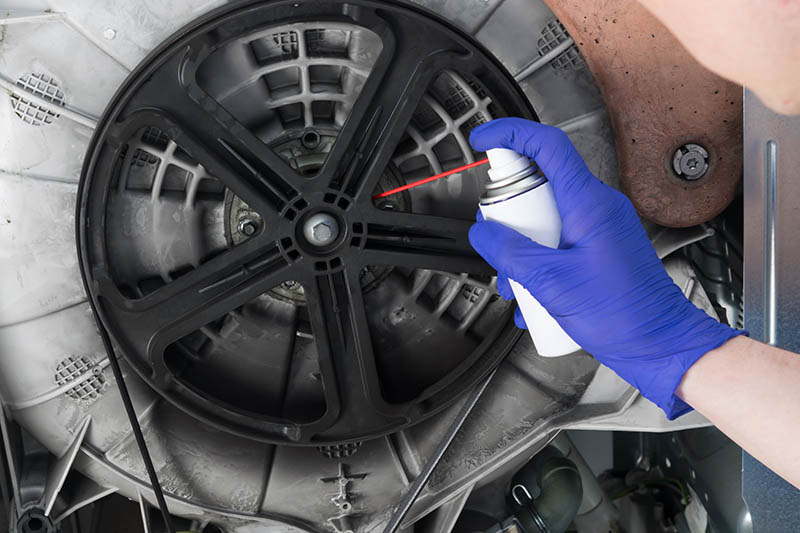White Lithium Grease vs. WD-40: What’s the Difference?
-
Ed Malaker
- Last updated:

WD-40 is a common item in many homes and has dozens of uses. However, many recommend lithium grease as an alternative, as it can work better for certain jobs. If you aren’t sure what the difference is between these two products or when to use them, keep reading as we go over the pros and cons of each.
 Overview of WD-40:
Overview of WD-40:
WD-40 is a water displacer and penetrating oil. It helps remove water from hard-to-reach places and creates a protective layer over metal and other surfaces to help protect against rust and corrosion. Its ingredients are a long-held trade secret, but it is oil based and combustible when dry. It’s also highly flammable as you spray it from the can, and if you are using it in an enclosed area, it can become explosive.
What It’s Good For
While many people use WD-40 as a lubricant to stop squeaky door hinges, it’s technically only a light lubricant and is more effective as a cleaner and degreaser. Use it to clean your tools, equipment, vehicle, and more to remove sap, gum, glue, and tape. You can also use it to free nuts and bolts and remove rust.
The downside to WD-40 is that it can remove lubrication if you spray it in the wrong place. For instance, many people use it on a bike chain, but it removes the oil almost immediately and renders it useless. If you leave it on too long, it might also damage or discolor plastics or rubber.
- Create a protective code of metal
- Removes rust
- Loosens bolts
- Cleans away glue, tar, sap, crayon, etc.
- Not a good lubrication
- Might damage plastic and rubber
Overview of Lithium Grease:
Lithium grease is a high-quality lubrication. Its main ingredient is lithium grease, but it also contains propane, butane, and other ingredients that function as an aerosol. These ingredients make it highly flammable when you spray the lubricant from the can, but it’s less volatile once it dries, and some brands even use ingredients that act as a flame retardant.
What It’s Good For
Use lithium grease in door hinges, locks, chains, garage door tracks, sliding doors, bearings, gears, and anywhere you need high-quality lubrication. It lasts a long time and isn’t affected by temperature, so you won’t need to replace it as frequently as many other lubricants.
- Long-lasting lubrication
- Not affected by temperature
- Suitable for many tasks
- Flammable when you spray it

Which Is Right for You?
The product that is right for you will depend on your needs. You likely want lithium grease if you need to stop your door from squeaking, lubricate a bike chain, or add lubrication to ball bearings. However, if you need to remove bumper stickers, tar, glue, or crayon, we recommend reaching for WD-40.

- Cleaning car rims
- Removing bumper stickers
- Removing dead bugs from windshield or grill
- Loosening resting nuts and bolts
- Lubricating squeaky hinges
- Lubricating bike chains
- Lubricating a garage door track
- Lubricating sliding doors
Conclusion
WD-40 and lithium grease are great products to have in the home, and you will use them for different purposes. WD-40 is a powerful cleaner that will help you remove tar, glue, and other items while remaining safe to use on paint or stainless steel. However, don’t use it for a squeaky door hinge. Instead, reach for lithium grease, which will provide better lubrication and last longer. It’s also better for lubricating any other items in your home, including sliding doors and latches.
Contents

